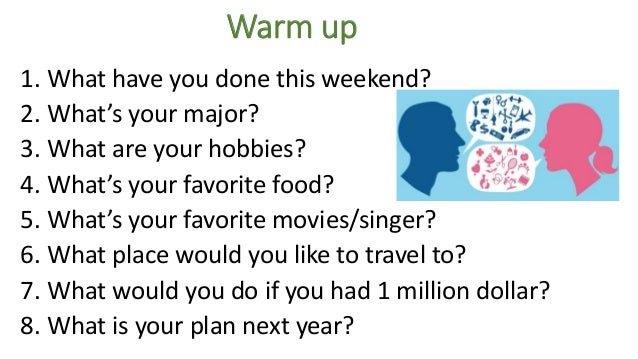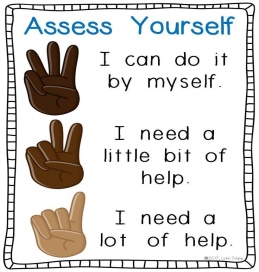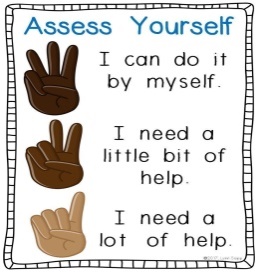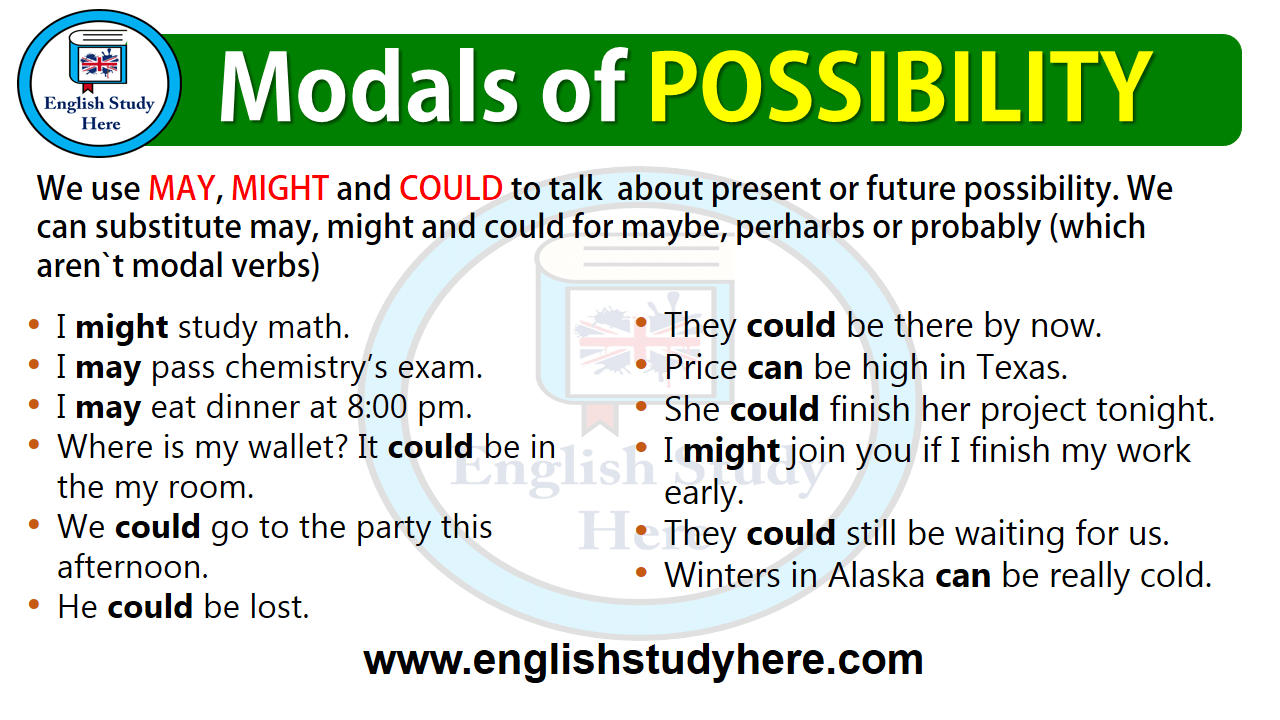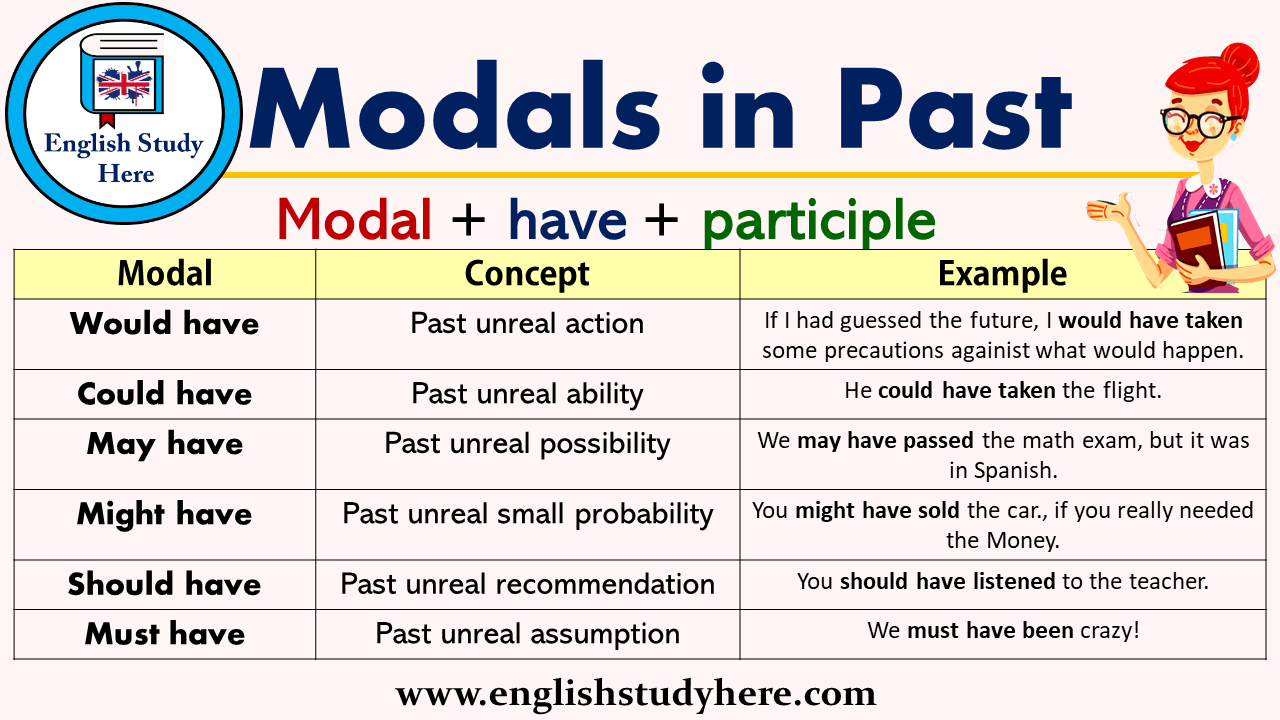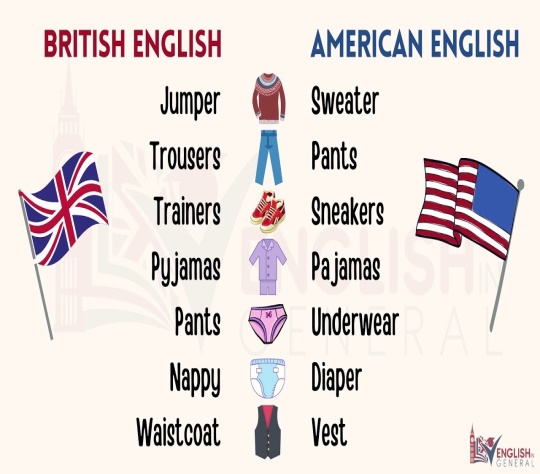Назар аударыңыз. Бұл материалды сайт қолданушысы жариялаған. Егер материал сіздің авторлық құқығыңызды бұзса, осында жазыңыз. Біз ең жылдам уақытта материалды сайттан өшіреміз
Жақын арада сайт әкімшілігі сізбен хабарласады

Бонусты жинап картаңызға (kaspi Gold, Halyk bank) шығарып аласыз


11 Solution КМЖ Investigate and report on timekeeping devices бөліміне арналған кмж
Дипломдар мен сертификаттарды алып үлгеріңіз!


Материалдың толық нұсқасын
жүктеп алып көруге болады
Short term plan: term 2
|
Unit 4 Investigate and report on timekeeping devices |
Lesson 34 |
||
|
Teacher name: |
|
||
|
Date: |
|
||
|
Grade: 10 |
Number present: |
absent: |
|
|
Lesson title |
Keeping time |
||
|
Learning objectives |
11.2.8.1 - recognize inconsistencies in argument in extended talk on a range of general and curricular subjects, including some unfamiliar topics 11.3.7.1 - use appropriate subject-specific vocabulary and syntax to talk about a range of familiar and some unfamiliar general and curricular topics 11.4.5.1 - deduce meaning from context in extended texts on a wide range of familiar and unfamiliar general and curricular topics |
||
|
Lesson objectives |
Learners will be able to: develop listening skills through understanding information in the context of timekeeping devices. apply topic related vocabulary with support. |
||
|
Plan |
|||
|
Stages / Time |
Teachers actions |
Students actions |
Assessment criteria |
Resources |
|
Beginning of the lesson Warming-up 3 min Pre-learning «Brainstorming» method 7 min.
|
Organization moment : 1.Greeting. Ask about the weather. The teacher sets the lesson objectives, letting students know what to anticipate from the lesson.
revise the vocabulary from the previous Lead – In
|
. The aim: To develop pupils speaking skills and create friendly atmosphere Efficiency: By wishing each other they feel better and feel the support of others Students of the class are listed. Students' attention is drawn to the lesson. • Learners remember previous lesson vocabulary Determines the topic and purpose of the lesson Students say different words from the picture How was the concept of keeping time created? |
The teacher to assess learners for their ability. “Good job! Well done!” Formative Assessment
Good job! Descriptor: - can tell the time Point 1 Assessment criteria - Learners have met the learning objectives if they can talk about keeping time |
Pictures worksheet Picture |
|
Middle of the lesson Presentation part. 30 min
|
Ex: 1 P: 34 • Focus attention on the pictures. Check the meaning of the words. Students then match the timekeeping devices with the images. Check the answer as a class. Then ask students to discuss the question. Ex:2 P: 34 • Ask students to read the quiz quickly and complete it with words from exercise 1. Check answers as a class. Ex:3 P: 34 • Play the recording for students to check their answers. Check answers as a class. Ex: 4 P: 34 • Allows students a minute to read the questions. Gives students time to read through the sentences. Play the recording again. Students compare answers and correct the sentences which are false. Ex: 5 P: 34 Go through the words together. Check meaning and pronunciation. Ask students to read the text and complete it. Check answers as a class. Conclusion during the lesson some tasks differentiated by outcomes of the students and by their abilities. |
•Pupils match the timekeeping devices to the images. Which is the most famous timepiece in Kazakhstan? ANSWERS A candle clock B quartz wristwatch C sundial D pendulum clock E hourglass F water clock G atomic clock H mechanical clock •Pupils read The Timeline of Timekeeping and complete the text with the timekeeping devices in exercise 1 ANSWERS Students own answer •Pupils listen to an interview with a historian and check your answers to exercise 2 ANSWERS 1 sundial 2 water clocks 3 candle clocks 4 Hourglasses 5 Mechanical clocks 6 pendulum clock 7 quartz wristwatch 8 atomic clocks •Pupils listen again. Are the sentences true or false? Correct the false sentences. ANSWERS 1F 2T 3 F The hourglass appeared in the 11th century whereas the candle clock existed from the early middle ages. 4T 5T 6 F Quartz clocks are not mechanical – they send electricity through a quartz crystal which emits vibrations. 7 T 8 T •Pupils complete the text with some of the words below ANSWERS Students own answer |
Descriptor: - match the timekeeping devices - answer the question Total: 3 point Descriptor: - read The Timeline of Timekeeping - complete the text with the timekeeping devices Total: 2 point
Descriptor: - listen to an interview - answer the question Total: 2 point
Descriptor: - complete the text with some of the words Total: 3 point -Make CCQ questions Yes / No pupils are evaluated by collecting pencils Total: 10 point |
Card Worksheet
|
|
End of the lesson 5 min |
FEEDBACK Learners provide feedback on what they have learned at the lesson. Ex: Home task: |
|
Poster Success
|
|
Short term plan: term 2
|
Unit 4 Investigate and report on timekeeping devices |
Lesson 35 |
||
|
Teacher name: |
|
||
|
Date: |
|
||
|
Grade: 10 |
Number present: |
absent: |
|
|
Lesson title |
Keeping time |
||
|
Learning objectives |
11.2.1.1 - understand the main points in unsupported extended talk on a wide range of general and curricular topics, including talk on a growing range of unfamiliar topic 11.3.2.1 - ask and respond with appropriate syntax and vocabulary to open-ended higher-order thinking questions on a range of general and curricular topics, including some unfamiliar topics 11.4.8.1 - select and evaluate paper and digital reference resources to check meaning and extend understanding |
||
|
Lesson objectives |
Learners will be able to: develop listening skills through understanding information in the context of a special time of year. use the first conditional for predicting with support. discuss topic questions in simple sentences |
||
|
Plan |
|||
|
Stages / Time |
Teachers actions |
Students actions |
Assessment criteria |
Resources |
|
Beginning of the lesson Warming-up 3 min Pre-learning «Brainstorming» method 7 min.
|
Organization moment : 1.Greeting. Ask about the weather. The teacher sets the lesson objectives, letting students know what to anticipate from the lesson.
revise the vocabulary from the previous Lead – In
|
. The aim: To develop pupils speaking skills and create friendly atmosphere Efficiency: By wishing each other they feel better and feel the support of others Students of the class are listed. Students' attention is drawn to the lesson. • Learners remember previous lesson vocabulary Determines the topic and purpose of the lesson Students say different words from the picture How was the concept of keeping time created? |
The teacher to assess learners for their ability. “Good job! Well done!” Formative Assessment
Good job! Descriptor: - can tell the time Point 1 Assessment criteria - Learners have met the learning objectives if they can talk about keeping time |
Pictures worksheet Picture |
|
Middle of the lesson Presentation part. 30 min
|
Ex: 6 P: 35 • Go through the questions together and they play the recording for students to answer the questions. Check answers as a class. Ex:7 P: 35 • Go through the Recycle! box together. With a stronger class, ask students to try to complete the sentences before you play the recording again. Play the recording again, pausing after each section for students to complete the sentences. Check answers as a class. Ex:8 P: 35 • In pairs, students ask and answers the questions. Monitor and check their grammar, vocabulary and pronunciation. Conclusion during the lesson some tasks differentiated by outcomes of the students and by their abilities. |
•Pupils listen to four people talking about a special time of year in their country and answer the questions. ANSWERS A 2 B 4 C 3 D 1 •Pupils read the Recycle! box. Listen again. Complete the sentences using the words in brackets. ANSWERS 1 you will find 2 you might see children dance around a large pole 3 won't sleep 4 could be surprised •Pupils work in pairs. Ask and answer the questions ANSWERS Students own answer |
Descriptor: - Pupils listen to four people talking about a special time of year - answer the question Total: 3 point
Descriptor: - read the Recycle! box - complete the sentences using the words in brackets Total: 2 point
Descriptor: - work in pairs - ask and answer the questions Total: 2 point -Make CCQ questions Yes / No Total: 10 point |
Card Worksheet
|
|
End of the lesson 5 min |
FEEDBACK Learners provide feedback on what they have learned at the lesson. Ex: Home task: |
|
Poster Success
|
|
Short term plan: term 2
|
Unit 4 Investigate and report on timekeeping devices |
Lesson 36 |
||
|
Teacher name: |
|
||
|
Date: |
|
||
|
Grade: 10 |
Number present: |
absent: |
|
|
Lesson title |
Modals: present and future |
||
|
Learning objectives |
11.3.6.1 - navigate talk and modify language through paraphrase and correction in talk on a wide range of familiar and some unfamiliar general and curricular topics 11.4.3.1 - skim a range of lengthy texts with speed to identify content meriting closer reading on a range of more complex and abstract, general and curricular topics 11.6.12.1 - use a wide variety of past modal forms to express appropriate functions; use a variety of near modal structures including supposed to, bound to, due, willing to on a wide range of general and curricular topics |
||
|
Lesson objectives |
Learners will be able to: demonstrate correct use of modals to talk about present and future possibly with support |
||
|
Plan |
|||
|
Stages / Time |
Teachers actions |
Students actions |
Assessment criteria |
Resources |
|
Beginning of the lesson Warming-up 3 min Pre-learning «Brainstorming» method 7 min.
|
Organization moment : 1.Greeting. Ask about the weather. The teacher sets the lesson objectives, letting students know what to anticipate from the lesson.
revise the vocabulary from the previous Lead – In
|
. The aim: To develop pupils speaking skills and create friendly atmosphere Efficiency: By wishing each other they feel better and feel the support of others Students of the class are listed. Students' attention is drawn to the lesson. • Learners remember previous lesson vocabulary Determines the topic and purpose of the lesson Students say different words from the picture How was the concept of keeping time created? |
The teacher to assess learners for their ability. “Good job! Well done!” Formative Assessment
Good job! Descriptor: - can tell the time Point 1 Assessment criteria - Learners have met the learning objectives if they can talk about future |
Pictures worksheet Picture |
|
Middle of the lesson Presentation part. 30 min
|
Ex: 1 P: 36 • In pairs, students talk about cultural problems people might have when travelling abroad. Ask some students for their ideas Ex:2 P: 36 • Tell students to read the text quickly and decide on the best piece of advice. Elicit some answers and the reasons why Ex:3 P: 36 • Complete the rules in the Learn this! box together. Students can then find examples in the text. Check answers as a class. Ex:4 P: 36 Students complete the sentences. Check answers as a class Ex:5 P: 36 Go through the Learn this! box together. Students can then find examples in the text. Check answers as a class Conclusion during the lesson some tasks differentiated by outcomes of the students and by their abilities. |
•Pupils work in pairs. Answer the question ANSWERS Students own answer •Pupils read the text. Answer the question ANSWERS Students own answer •Pupils complete the Learn this! box with the verbs below. Then find examples of the rules in the text in exercise 2 ANSWERS 1 should and ought to 2 must and have to 3 mustn't 4 don't have to, don't need to and needn't 5 be supposed to 1 You ought to plan to keep in touch with friends and family 2 you must try to learn some key phrases 3 You mustn't worry if you can't see or do everything 4 You don't have to be fluent 5 so you understand what you're supposed to do (and what you're not supposed to do) •Pupils choose the correct verbs to complete the sentences. ANSWERS 1 should 2 mustn't 3 are supposed to 4 don't have to 5 You're supposed to 6 ought to •Pupils read the Learn this! box. Then find examples of the rules in the text in exercise 2 ANSWERS 1 you may find it helps to read about the history and culture; you might love it; 2 N/A 3 there must be one in the language you need 4 you'll be able to find a wide variety of online language courses 5 Travelling can be lonely; You can't learn everything about where you're visiting |
Descriptor: - work in pairs - answer the question Total: 3 point
Descriptor: - complete the Learn this! box - find examples of the rules in the text Total: 2 point
Descriptor: - choose the correct verbs to complete the sentences Total: 2 point Descriptor: - find examples of the ru Total: 2 point -Make CCQ questions Yes / No Total: 10 point |
Card Worksheet
|
|
End of the lesson 5 min |
FEEDBACK Learners provide feedback on what they have learned at the lesson. Ex: Home task: |
|
Poster Success
|
|
Short term plan: term 2
|
Unit 4 Investigate and report on timekeeping devices |
Lesson 37 |
||
|
Teacher name: |
|
||
|
Date: |
|
||
|
Grade: 10 |
Number present: |
absent: |
|
|
Lesson title |
When in Rome … |
||
|
Learning objectives |
11.1.8.1 - develop intercultural awareness through reading and discussion 11.2.2.1 - understand specific information in unsupported extended talk on a wide range of general and curricular topics, including talk on a growing range of unfamiliar topics 11.3.1.1 - use formal and informal language registers in talk on a range of general and curricular topics, including some unfamiliar topics |
||
|
Lesson objectives |
Learners will be able to: identify different types of listening texts with support. role-play meeting people in formal and informal situations with support. |
||
|
Plan |
|||
|
Stages / Time |
Teachers actions |
Students actions |
Assessment criteria |
Resources |
|
Beginning of the lesson Warming-up 3 min Pre-learning «Brainstorming» method 7 min.
|
Organization moment : 1.Greeting. Ask about the weather. The teacher sets the lesson objectives, letting students know what to anticipate from the lesson.
revise the vocabulary from the previous Lead – In |
. The aim: To develop pupils speaking skills and create friendly atmosphere Efficiency: By wishing each other they feel better and feel the support of others Students of the class are listed. Students' attention is drawn to the lesson. • Learners remember previous lesson vocabulary Determines the topic and purpose of the lesson Students say different words from the picture How was the concept of keeping time created? |
The teacher to assess learners for their ability. “Good job! Well done!” Formative Assessment
Good job! Descriptor: - can tell the time Point 1 Assessment criteria - Learners have met the learning objectives if they can talk about future |
Pictures worksheet Picture |
|
Middle of the lesson Presentation part. 30 min
|
Ex: 1 P: 37 • Go through the questions together and ask students to discuss them with a partner. Ask a few students for their answers Ex:2 P: 37 • Explain the task and play the recording for students to match the extracts with the photos. Check answers as a class. Ex:3 P: 37 • Play the recording again for students to write the formal version of the sentences. With a stronger class, ask students to try to write the formal sentences before you play the recording. Check answers as a class. Ex:4 P: 37 Go through the Listening Strategy together. Play the recording, pausing after each speaker to give students time to write their answers. Check answers as a class. Conclusion during the lesson some tasks differentiated by outcomes of the students and by their abilities. |
•Pupils work in pairs. Answer the questions ANSWERS Students own answer •Pupils listen to ten extracts from dialogues. Match each extract with a photo, A or B ANSWERS Photo A 1, 3, 4, 8, 9 Photo B 2,5,6,7,10 •Pupils listen again. Rewrite the sentences making them formal. Use the words in brackets to help you ANSWERS 1 Good morning / afternoon. 2 I don't believe we've met. 3 It's a pleasure to meet you. 4 Allow me to introduce you to my colleagues. 5 Could I fetch you a coffee at all? 6 It's very kind of you to offer •Pupils read the Listening Strategy. Then listen and match each dialogue with a text type. Give reasons for your answers. ANSWERS 1 f formal language and topic vocabulary: colleague; We are very much hoping that you will be able to work with us on this. 2 b tone of voice; informal language, e.g. Guess what! 3 d formal language and topic vocabulary: passengers for flight BA6Y3; gate number 47 4 e tone of voice; polite request for help: Could you help me, please? I'm trying to find Leicester Square. 5 c formal language; the topic is a news item: The government has issued a statement regarding travel to Africa in the near future; tone of voice 6 a tone of voice; informal language; language of persuasion: Tired of queuing in busy airports?... Then you |
Descriptor: - work in pairs - answer the question Total: 3 point
Descriptor: - listen to ten extracts from dialogues - match each extract with a photo, Total: 2 point
Descriptor: - rewrite the sentences making them formal. Use the words in brackets to help you Total: 2 point
Descriptor: - match each dialogue with a text type Total: 2 point -Make CCQ questions Yes / No Total: 10 point |
Card Worksheet
|
|
End of the lesson 5 min |
FEEDBACK Learners provide feedback on what they have learned at the lesson. Ex: Home task: |
|
Poster Success
|
|
Short term plan: term 2
|
Unit 4 Investigate and report on timekeeping devices |
Lesson 38 |
||
|
Teacher name: |
|
||
|
Date: |
|
||
|
Grade: 10 |
Number present: |
absent: |
|
|
Lesson title |
Modals in the past |
||
|
Learning objectives |
11.2.4.1 - implied meaning in unsupported extended talk on a wide range of general and curricular topics, including talk on a growing range of unfamiliar topics 11.3.6.1 - navigate talk and modify language through paraphrase and correction in talk on a wide range of familiar and some unfamiliar general and curricular topics 11.6.12.1 - use a wide variety of past modal forms to express appropriate functions ; use a variety of near modal structures including supposed to, bound to, due, willing to on a wide range of general and curricular topics |
||
|
Lesson objectives |
Learners will be able to: • use modal verbs to talk about past actions with support. |
||
|
Plan |
|||
|
Stages / Time |
Teachers actions |
Students actions |
Assessment criteria |
Resources |
|
Beginning of the lesson Warming-up 3 min Pre-learning «Brainstorming» method 7 min.
|
Organization moment : 1.Greeting. Ask about the weather. The teacher sets the lesson objectives, letting students know what to anticipate from the lesson.
revise the vocabulary from the previous Lead – In
|
. The aim: To develop pupils speaking skills and create friendly atmosphere Efficiency: By wishing each other they feel better and feel the support of others Students of the class are listed. Students' attention is drawn to the lesson. • Learners remember previous lesson vocabulary Determines the topic and purpose of the lesson Students say different words from the picture How was the concept of keeping time created? |
The teacher to assess learners for their ability. “Good job! Well done!” Formative Assessment
Good job! Descriptor: - can tell the time Point 1 Assessment criteria - Learners have met the learning objectives if they can talk about future |
Pictures worksheet Picture |
|
Middle of the lesson Presentation part. 30 min
|
Ex: 1 P: 38 • Focus attention on the photo and elicit ideas about where it is. Ex:2 P: 38 • Play the recording while students read and listen to the dialogue and complete it. Check answers as a class. Ex:3 P: 38 • Go through the Learn this! box together. With a weaker class, revise the structure of modals in the past: modal + have + past participle. Ask students to find examples of the rules in the dialogue. Check answers as a class Ex:4 P: 38 •Explain that the modal verbs in the sentences are wrong and students must correct them. With a weaker class, do the first two items together. Tell students to write their answers in their notebooks. Check answers as a class. Conclusion during the lesson some tasks differentiated by outcomes of the students and by their abilities. |
•Pupils look at the photo. Where do you think this is? ANSWERS Students own answer •Pupils listen and complete the dialogue. ANSWERS 1 shouldn't 2 ought 3 might 4 could 5 must 6 should •Pupils read the Learn this! box. Match the modal verbs from exercise 2 with the rules. ANSWERS a I might not have embarrassed myself so badly b I shouldn't have gone without reading about their customs. I really ought to have been better prepared с Aki could have told me not to blow my nose in public! d The people in the restaurant must have thought I was so rude! e I sent it on Monday, so it should have arrived by now •Pupils underline the incorrect modal verb and replace it with a more suitable one. Sometimes more than one answer is possible ANSWERS 1 can't have/ couldn't have 2 might have/ could have 3 shouldn't have/ ought not to have 4 may not have/ might not have 5 must have/should have/ ought to have 6 must not have |
Descriptor: - look at the photo. - answer the question Total: 3 point Descriptor: - listen and complete the dialogue Total: 2 point Descriptor: - read the Learn this! box - match the modal verbs Total: 2 point
Descriptor: - underline the incorrect modal verb Total: 2 point
-Make CCQ questions Yes / No Total: 10 point |
Card Worksheet
|
|
End of the lesson 5 min |
FEEDBACK Learners provide feedback on what they have learned at the lesson. Ex: Home task: |
|
Poster Success
|
|
Short term plan: term 2
|
Unit 4 Investigate and report on timekeeping devices |
Lesson 39 |
||
|
Teacher name: |
|
||
|
Date: |
|
||
|
Grade: 10 |
Number present: |
absent: |
|
|
Lesson title |
Modals in the past |
||
|
Learning objectives |
11.2.6.1 - deduce meaning from context in unsupported extended talk on a wide range of general and curricular topics, including talk on a growing range of unfamiliar topics 11.3.6.1 - navigate talk and modify language through paraphrase and correction in talk on a wide range of familiar and some unfamiliar general and curricular topics 11.4.8.1 - select and evaluate paper and digital reference resources to check meaning and extend understanding |
||
|
Lesson objectives |
Learners will be able to: • use modal verbs to talk about past actions with support. |
||
|
Plan |
|||
|
Stages / Time |
Teachers actions |
Students actions |
Assessment criteria |
Resources |
|
Beginning of the lesson Warming-up 3 min Pre-learning «Brainstorming» method 7 min.
|
Organization moment : 1.Greeting. Ask about the weather. The teacher sets the lesson objectives, letting students know what to anticipate from the lesson.
revise the vocabulary from the previous Lead – In
|
. The aim: To develop pupils speaking skills and create friendly atmosphere Efficiency: By wishing each other they feel better and feel the support of others Students of the class are listed. Students' attention is drawn to the lesson. • Learners remember previous lesson vocabulary Determines the topic and purpose of the lesson Students say different words from the picture How was the concept of keeping time created? |
The teacher to assess learners for their ability. “Good job! Well done!” Formative Assessment
Good job! Descriptor: - can tell the time Point 1 Assessment criteria - Learners have met the learning objectives if they can talk about future |
Pictures worksheet Picture |
|
Middle of the lesson Presentation part. 30 min
|
Ex:5 P: 38 Go through the Look out! box together. Ask students to find examples of the structures in the dialogue. Check answers as a class. Ex:6 P: 38 Students choose the correct verbs in the sentences. Remind them that sometimes both verbs are correct. Check answers as a class. Ex:7 P: 38 Students complete the sentences with a modal in the past or didn’t need to + infinitive. Check answers as a class Conclusion during the lesson some tasks differentiated by outcomes of the students and by their abilities. |
•Pupils read the Look out! box. Then find examples of needn’t have and didn’t need to in exercise 2 ANSWERS 1 I'm sure you needn't have done. 2 I probably didn't need to send them anything, but I really wanted to apologise •Pupils look at the sentences. Are both verbs correct, or only one? ANSWERS 1 both 2 didn't need to stop 3 both 4 didn't need to wait 5 didn't need to pay •Pupils complete the sentences with a suitable modal verb and the correct form of the verbs in brackets ANSWERS 1 must have slept 2 didn't need to buy 3 couldn't/might not / may not have got 4 might/may/ could have left 5 needn't have booked 6 shouldn't/ought not to have brought |
Descriptor: - read the Look out! box. - find examples of needn’t have and didn’t need to Total: 3 point
Descriptor: - look at the sentences - complete the sentences Total: 2 point
Descriptor: - complete the sentences with a suitable modal verb - correct form of the verbs in brackets Total: 2 point -Make CCQ questions Yes / No Total: 10 point |
Card Worksheet
|
|
End of the lesson 5 min |
FEEDBACK Learners provide feedback on what they have learned at the lesson. Ex: Home task: |
|
Poster Success
|
|
Short term plan: term 2
|
Unit 4 Investigate and report on timekeeping devices |
Lesson 40 |
||
|
Teacher name: |
|
||
|
Date: |
|
||
|
Grade: 10 |
Number present: |
absent: |
|
|
Lesson title |
American English |
||
|
Learning objectives |
11.2.6.1 - deduce meaning from context in unsupported extended talk on a wide range of general and curricular topics, including talk on a growing range of unfamiliar topics 11.4.7.1 - recognize patterns of development in lengthy texts [inter-paragraph level] on a range of more complex and abstract general and curricular topics 11.5.1.1 - plan, write, edit and proofread work at text level independently on a wide range of general and curricular topics |
||
|
Lesson objectives |
Learners will be able to: differentiate between usage of American and British English with support |
||
|
Plan |
|||
|
Stages / Time |
Teachers actions |
Students actions |
Assessment criteria |
Resources |
|
Beginning of the lesson Warming-up 3 min Pre-learning «Brainstorming» method 7 min.
|
Organization moment : 1.Greeting. Ask about the weather. The teacher sets the lesson objectives, letting students know what to anticipate from the lesson.
revise the vocabulary from the previous Lead – In
|
. The aim: To develop pupils speaking skills and create friendly atmosphere Efficiency: By wishing each other they feel better and feel the support of others Students of the class are listed. Students' attention is drawn to the lesson. • Learners remember previous lesson vocabulary Determines the topic and purpose of the lesson Students say different words from the picture What is the differences between America English and British English? |
The teacher to assess learners for their ability. “Good job! Well done!” Formative Assessment
Good job! Descriptor: - can tell the time Point 1 Assessment criteria - Learners have met the learning objectives if they can talk about American English |
Pictures worksheet Picture |
|
Middle of the lesson Presentation part. 30 min
|
Ex:1 P: 39 Focus attention on the British English words and elicit the American English equivalents that students know. Play the recording for students to check or find the answers. Ex:2 P: 39 Go through the Learn this! box together. Students read the email and find examples for each point. Check answers as a class and elicit the British English equivalents and meanings Ex:3 P: 39 Go through the Dictionary Strategy together. Then ask students to read the dictionary entry and answer the questions Ex:4 P: 39 Students match the British and American English equivalents using a dictionary if necessary. Tell them to label the words with the correct abbreviations too. Check answers as a class. Conclusion during the lesson some tasks differentiated by outcomes of the students and by their abilities. |
•Pupils look at the British English words below. What are the American English equivalents? Listen to the three voicemails and check. ANSWERS film-movie flat-apartment lift - elevator petrol - gas tap-faucet toilet-restroom •Pupils read the email and the Learn this! box. Find examples of American English in the email ANSWERS vacation (holiday); transportation (transport); subway (underground); anyhow (anyway); fall (autumn); soccer (football); yard (garden) •Pupils read the Dictionary Strategy and the dictionary entry. What is the American word for ‘head teacher’? How are the two equivalents labelled? ANSWERS head teacher BrE principal NAmE •Pupils match the words in A with the words in B with the same meaning. Which word in each pair is American English? Use a dictionary to help you ANSWERS biscuit (BrE) - cookie (AmE) candy (AmE) - sweets (BrE) cell phone (AmE) - mobile (BrE) check (AmE) - bill (BrE) motorway (BrE) - highway (AmE) queue (BrE)-line (AmE); sidewalk (AmE) - pavement (BrE) sneakers (AmE) - trainers (BrE) torch (BrE) - flashlight (AmE |
Descriptor: - look at the British English words - Listen to the three voicemails and check. Total: 3 point
Descriptor: - read the email and the Learn this - Find examples of American English in the email Total: 2 point
Descriptor: - read the Dictionary Strategy - answer the question Total: 2 point Descriptor: - match the words in A with the words in B - Use a dictionary Total: 2 point -Make CCQ questions Yes / No Total: 10 point |
Card Worksheet
|
|
End of the lesson 5 min |
FEEDBACK Learners provide feedback on what they have learned at the lesson. Ex: Home task: |
|
Poster Success
|
|
Short term plan: term 2
|
Unit 4 Investigate and report on timekeeping devices |
Lesson 41 |
||
|
Teacher name: |
|
||
|
Date: |
|
||
|
Grade: 10 |
Number present: |
absent: |
|
|
Lesson title |
American English |
||
|
Learning objectives |
11.2.6.1 - deduce meaning from context in unsupported extended talk on a wide range of general and curricular topics, including talk on a growing range of unfamiliar topics 11.3.2.1 - ask and respond with appropriate syntax and vocabulary to open -ended higher -order thinking questions on a range of general and curricular topics, including some unfamiliar topics 11.4.2.1 - understand specific information and detail in extended texts on a wide range of familiar and unfamiliar general and curricular topics |
||
|
Lesson objectives |
Learners will be able to: differentiate between usage of American and British English with support |
||
|
Plan |
|||
|
Stages / Time |
Teachers actions |
Students actions |
Assessment criteria |
Resources |
|
Beginning of the lesson Warming-up 3 min Pre-learning «Brainstorming» method 7 min.
|
Organization moment : 1.Greeting. Ask about the weather. The teacher sets the lesson objectives, letting students know what to anticipate from the lesson.
revise the vocabulary from the previous Lead – In
|
. The aim: To develop pupils speaking skills and create friendly atmosphere Efficiency: By wishing each other they feel better and feel the support of others Students of the class are listed. Students' attention is drawn to the lesson. • Learners remember previous lesson vocabulary Determines the topic and purpose of the lesson Students say different words from the picture What is the differences between America English and British English? |
The teacher to assess learners for their ability. “Good job! Well done!” Formative Assessment
Good job! Descriptor: - can tell the time Point 1 Assessment criteria - Learners have met the learning objectives if they can talk about American English |
Pictures worksheet Picture |
|
Middle of the lesson Presentation part. 30 min
|
Ex:5 P: 39 Students write the British English equivalent of the words in bold, using a dictionary if necessary. Check answers as a class Ex:6 P: 39 Go through the Look out! box together. Students then find examples for each rule in the email. Tell them to use a dictionary for the British English spelling if necessary. Check answers as a class Ex:7 P: 39 Read out rule 3 in the Look out! box. Then tell students they will hear both versions of the words. Play the recording for students to write the correct abbreviation. Check answers as a class. Play the recording again, pausing after each pair of words for students to practise the different pronunciation Ex:8 P: 39 Tell students they will hear six speakers. They must decide whether they are American or British. Play the recording. Check answers as a class Conclusion during the lesson some tasks differentiated by outcomes of the students and by their abilities. |
•Pupils what is the British English equivalent for the words in bold? Use a dictionary to help you ANSWERS 1 handbag 2 car park 3 crisps 4 bin 5 wardrobe 6 dummy •Pupils read rules 1 and 2 in the Look out! box. Find examples in exercise 2 and make a note of the British English spelling ANSWERS neighbor - neighbour practice - practise license-licence theater-theatre organized organised •Pupils read rule 3 in the Look out! box. Listen to the words below being said by an American and a British speaker. Which one do you hear first? Write Am or Br ANSWERS 2 Br 3 Am 4 Br 5 Am 6 Am 7 Br 8 Am 9 Br 10 Br •Pupils listen to six speakers. Is each speaker American or British? ANSWERS 1 Am 2 Br 3 Am 4 Am 5 Br 6 Br |
Descriptor: - write the British English equivalent of the words in bold - Use a dictionary Total: 3 point
Descriptor: - read rules 1 and 2 in the Look out! - make a note of the British English spelling Total: 2 point
Descriptor: - read rule 3 in the Look out! box. - write Am or Br Total: 2 point Descriptor: - listen to six speakers - identify the speakers Total: 2 point -Make CCQ questions Yes / No Total: 10 point |
Card Worksheet
|
|
End of the lesson 5 min |
FEEDBACK Learners provide feedback on what they have learned at the lesson. Ex: Home task: |
|
Poster Success
|
|
Short term plan: term 2
|
Unit 4 Investigate and report on timekeeping devices |
Lesson 42 |
||
|
Teacher name: |
|
||
|
Date: |
|
||
|
Grade: 10 |
Number present: |
absent: |
|
|
Lesson title |
The Longitude Prize Summative assessment for the unit 4 |
||
|
Learning objectives |
11.2.2.1 - understand specific information in unsupported extended talk on a wide range of general and curricular topics, including talk on a growing range of unfamiliar topics 11.3.5.1 - interact with peers to make hypotheses and evaluate alternative proposals on a range of familiar and some unfamiliar general and curricular topics 11.4.8.1 - select and evaluate paper and digital reference resources to check meaning and extend understanding |
||
|
Lesson objectives |
Learners will be able to: identify topic sentences, main ideas, and supporting details in an article about science. discuss important global problems and suggest possible solutions with support |
||
|
Plan |
|||
|
Stages / Time |
Teachers actions |
Students actions |
Assessment criteria |
Resources |
|
Beginning of the lesson Warming-up 3 min Pre-learning «Brainstorming» method 7 min.
|
Organization moment : 1.Greeting. Ask about the weather. The teacher sets the lesson objectives, letting students know what to anticipate from the lesson.
revise the vocabulary from the previous Lead – In
|
. The aim: To develop pupils speaking skills and create friendly atmosphere Efficiency: By wishing each other they feel better and feel the support of others Students of the class are listed. Students' attention is drawn to the lesson. • Learners remember previous lesson vocabulary Determines the topic and purpose of the lesson Students say different words from the picture What is the differences between America English and British English? |
The teacher to assess learners for their ability. “Good job! Well done!” Formative Assessment
Good job! Descriptor: - can tell the time Point 1 Assessment criteria - Learners have met the learning objectives if they can talk about science. |
Pictures worksheet Picture |
|
Middle of the lesson Presentation part. 30 min
|
Ex:1 P: 40 Focus attention on the pictures. Check the meaning of the words. Students then match the measuring devices with the images. Check the answer as a class. Then ask students to discuss the question Ex:2 P: 40 Focus attention on the title of the text and check understanding of the abbreviation GPS (/dʒiːpiːˈes/: Global Positioning System. Focus attention on the two questions. Ask students to scan the text quickly and find the answers Ex:3 P: 40 Students read the text again more slowly and answer the questions. Check answers as a class Summative assessment for the unit 4 Conclusion during the lesson some tasks differentiated by outcomes of the students and by their abilities. |
•Pupils match the pictures of measuring devices to the words below. What does each device do? ANSWERS A foot measure: instrument for measuring a person's sh size B thermostat: a device that automatically regulates temperature, or that activates a device when the temperature reaches a certain point C theodolite: a surveying instrument with a rotating telescope for measuring horizontal and vertical angles D pressure gauge: a device which measures the pressure in a gas or liquid. E stopwatch: a special watch with buttons that start, stop and then zero the hands, used to time races F marine chronometer: timepiece that is precise and accurate enough to be used as a portable time standard; it can therefore be used to determine longitude by means of accurately measuring the time of a known fixed location •Pupils read the text. What solution did the British government suggest for a problem in the 18th century? Was it successful? ANSWERS It suggested a competition called The Longitude Prize. Yes, it was successful •Pupils read the text again. Answer the questions ANSWERS Students own answer |
Descriptor: - match the pictures of measuring devices to the words Total: 3 point
Descriptor: - read the text - answer the question Total: 2 point
Descriptor: - read the text - answer the question Total: 2 point -Make CCQ questions Yes / No Total: 10 point |
Card Worksheet
|
|
End of the lesson 5 min |
FEEDBACK Learners provide feedback on what they have learned at the lesson. Ex: Home task: |
|
Poster Success
|
|
Short term plan: term 2
|
Unit 4 Investigate and report on timekeeping devices |
Lesson 43 |
||
|
Teacher name: |
|
||
|
Date: |
|
||
|
Grade: 10 |
Number present: |
absent: |
|
|
Lesson title |
The Longitude Prize |
||
|
Learning objectives |
11.2.6.1 - deduce meaning from context in unsupported extended talk on a wide range of general and curricular topics, including talk on a growing range of unfamiliar topics. 11.4.2.1 - understand specific information and detail in extended texts on a wide range of familiar and unfamiliar general and curricular topics. 11.5.7.1 - use independently appropriate layout at text level on a wide range of general and curricular topics. |
||
|
Lesson objectives |
Learners will be able to: identify and formulate the main idea of the listening segment with support. discuss topic questions in simple sentences. |
||
|
Plan |
|||
|
Stages / Time |
Teachers actions |
Students actions |
Assessment criteria |
Resources |
|
Beginning of the lesson Warming-up 3 min Pre-learning «Brainstorming» method 7 min.
|
Organization moment : 1.Greeting. Ask about the weather. The teacher sets the lesson objectives, letting students know what to anticipate from the lesson.
revise the vocabulary from the previous Lead – In
|
. The aim: To develop pupils speaking skills and create friendly atmosphere Efficiency: By wishing each other they feel better and feel the support of others Students of the class are listed. Students' attention is drawn to the lesson. • Learners remember previous lesson vocabulary Determines the topic and purpose of the lesson Students say different words from the picture What is the differences between America English and British English? |
The teacher to assess learners for their ability. “Good job! Well done!” Formative Assessment
Good job! Descriptor: - can tell the time Point 1 Assessment criteria - Learners have met the learning objectives if they can talk about the first GPS |
Pictures worksheet Picture |
|
Middle of the lesson Presentation part. 30 min
|
Ex:6 P: 41 Play the recording for students to identify the challenge. Elicit the answer. Ex:7 P: 41 Allow time for students to read the sentences and options. With a stronger class, ask students to try to answer the questions before listening to the recording again. Play the recording again for students to choose the correct answers or check their answers. Check answers as a class. Ex:8 P: 41 In pairs, students decide on another challenge for the new Longitude Prize and discuss possible solutions. Monitor and help with grammar and vocabulary where necessary. Ask a few students to share their ideas with the class. Conclusion during the lesson some tasks differentiated by outcomes of the students and by their abilities. |
•Pupils listen to a podcast. Which problem from exercise 4 was chosen as the challenge for the Longitude Prize? ANSWERS Students own answer •Pupils listen again. Choose the correct answers ANSWERS Students own answer •Pupils work in pairs. What important problem in the world would you add to the list in exercise 4? ANSWERS Students own answer |
Descriptor: - listen to a podcast. - answer the question Total: 3 point
Descriptor: - listen again. - choose the correct answers Total: 2 point Descriptor: - work in pairs - answer the question Total: 2 point -Make CCQ questions Yes / No Total: 10 point |
Card Worksheet
|
|
End of the lesson 5 min |
FEEDBACK Learners provide feedback on what they have learned at the lesson. Ex: Home task: |
|
Poster Success
|
|
Short term plan: term 2
|
Unit 4 Investigate and report on timekeeping devices |
Lesson 44 |
||
|
Teacher name: |
|
||
|
Date: |
|
||
|
Grade: 10 |
Number present: |
absent: |
|
|
Lesson title |
Topic-based presentation |
||
|
Learning objectives |
11.2.4.1 - implied meaning in unsupported extended talk on a wide range of general and curricular topics, including talk on a growing range of unfamiliar topics 11.3.2.1 - ask and respond with appropriate syntax and vocabulary to open -ended higher -order thinking questions on a range of general and curricular topics, including some unfamiliar topics |
||
|
Lesson objectives |
Learners will be able to: give a topic-based presentation describing annual celebrations in Kazakhstan with support. |
||
|
Plan |
|||
|
Stages / Time |
Teachers actions |
Students actions |
Assessment criteria |
Resources |
|
Beginning of the lesson Warming-up 3 min Pre-learning «Brainstorming» method 7 min.
|
Organization moment : 1.Greeting. Ask about the weather. The teacher sets the lesson objectives, letting students know what to anticipate from the lesson.
revise the vocabulary from the previous Lead – In
|
. The aim: To develop pupils speaking skills and create friendly atmosphere Efficiency: By wishing each other they feel better and feel the support of others Students of the class are listed. Students' attention is drawn to the lesson. • Learners remember previous lesson vocabulary Determines the topic and purpose of the lesson Students say different words from the picture |
The teacher to assess learners for their ability. “Good job! Well done!” Formative Assessment
Good job! Descriptor: - can tell the time Point 1 Assessment criteria - Learners have met the learning objectives if they can talk about a cultural event or festival. |
Pictures worksheet Picture |
|
Middle of the lesson Presentation part. 30 min
|
Ex:1 P: 42 Students work in pairs to discuss the questions. Circulate and monitor, helping where necessary. Ask a few pairs of students to share their ideas with the class. Ex:2 P: 42 Focus attention on the two photos. Students say what they think the two events are and give reasons for their choice. You could ask students to describe the last family event they went to. Ex:3 P: 42 Students look at the photos in exercise 2 again. Focus attention on the task and read through the bullet points. Students listen to the student doing the task and say if they completed the task fully. Check answers as a class. Ex:4 P: 42 Go through Speaking Strategy 1 together. Then focus attention on the key phrases for moving onto another topic or point and ask students to complete them. Check answers as a class. Ex:5 P: 42 Play the recording again for students to identify the phrases from exercise 3. Check answers as a class. Conclusion during the lesson some tasks differentiated by outcomes of the students and by their abilities. |
•Pupils discuss these question in pairs ANSWERS Students own answer •Pupils look at the photos. What special events do you think the people are celebrating? Why do you think that? ANSWERS Students own answer •Pupils read the task below, including the three question prompts. Then listen to a student doing the task. ANSWERS Students own answer •Pupils read Speaking Strategy 1. Then complete phrases 1–5 with the words below ANSWERS 1 concerned 2 now 3 else 4 subject 5 turn •Pupils listen again. Which phrases from exercise 4 did you hear? Which prompt from the task in exercise 3 does the student not mention? ANSWERS The student says phrases 1 and 3. The student doesn't mention the second bullet point |
Descriptor: - discuss these question in pairs Total: 3 point
Descriptor: - read the task - listen to a student doing the task Total: 2 point Descriptor: - read Speaking Strategy 1 - complete phrases with the words Total: 2 point Descriptor: - listen again - answer the question Total: 2 point -Make CCQ questions Yes / No Total: 10 point |
Card Worksheet
|
|
End of the lesson 5 min |
FEEDBACK Learners provide feedback on what they have learned at the lesson. Ex: Home task: |
|
Poster Success
|
|


